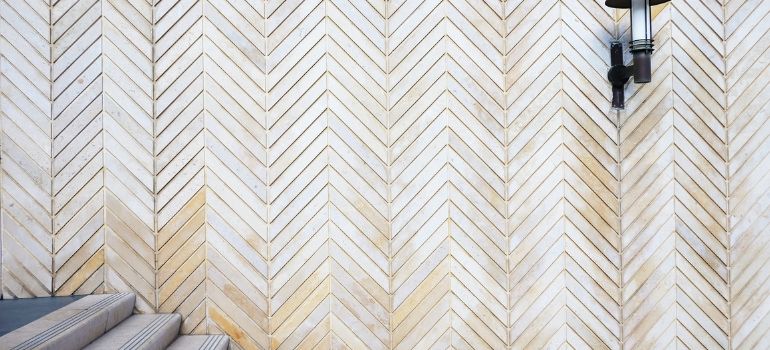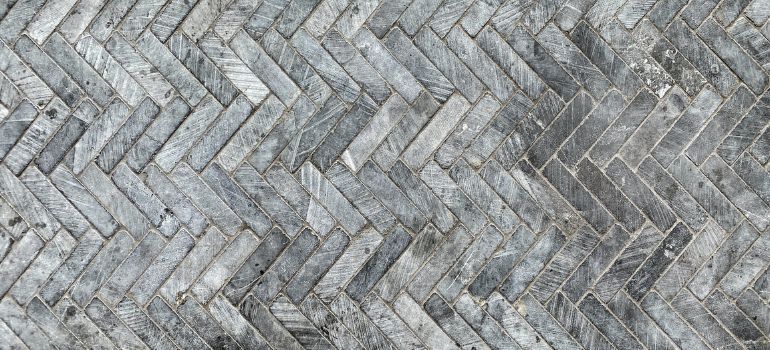Subway tile and the herringbone pattern are two popular choices in interior design that bring distinct aesthetics to spaces. Whether you’re renovating a kitchen, bathroom, or any other area, understanding the characteristics, pros, and cons of each option is crucial to making an informed decision.
Introduction
Definition of Subway Tile
Subway tiles, known for their rectangular shape and beveled edges, have been a staple in interior design since the early 20th century. They are characterized by their clean and timeless look, making them a favorite in various settings.
Definition of Herringbone Pattern
On the other hand, the herringbone pattern involves arranging rectangular tiles or planks in a V-shaped pattern. This design adds a touch of sophistication and visual interest to any space, making it a popular choice for those seeking a unique look.
Popularity of Both in Interior Design
Both subway tiles and the herringbone pattern have gained immense popularity for their ability to enhance the visual appeal of spaces. Understanding their characteristics and weighing the pros and cons will help you choose the one that suits your style and needs.
Subway Tile Characteristics
Size and Shape
Subway tiles typically measure 3 inches by 6 inches, but variations in size are available. The rectangular shape allows for versatile design possibilities, from classic grid patterns to creative arrangements.
Materials Used
Traditionally made of ceramic, subway tiles are now available in various materials, including glass, porcelain, and natural stone. This diversity allows for customization based on the desired aesthetic and functional requirements.
Versatility in Design
Subway tiles are incredibly versatile and can adapt to different design styles. From traditional to modern, subway tiles seamlessly fit into various interior aesthetics, providing a timeless backdrop for any space.
Herringbone Pattern Characteristics

Distinctive Pattern
The herringbone pattern’s distinctive V-shaped arrangement creates a sense of movement and adds visual interest to walls and floors. This pattern stands out as a focal point, making it a favorite for those who want to make a bold statement.
Visual Appeal
Herringbone patterns have a unique visual appeal that can elevate the overall design of a room. The diagonal arrangement of tiles creates a dynamic and eye-catching effect, especially when used as a feature wall or flooring.
Applications in Interior Design
While commonly used for flooring, the herringbone pattern is versatile and can be applied to walls, backsplashes, and even ceilings. This flexibility allows for creative expression and customization in various parts of the home.
Pros and Cons of Subway Tile
Pros
Classic Aesthetic
Subway tiles have a timeless and classic aesthetic that suits a wide range of design styles. Whether you prefer a vintage look or a contemporary vibe, subway tiles can adapt effortlessly.
Easy to Clean
The smooth surface of subway tiles makes them easy to clean and maintain. A simple wipe-down with a mild cleanser keeps them looking fresh and bright, making them ideal for kitchens and bathrooms.
Affordability
Compared to some other tile options, subway tiles are often more affordable. This makes them an attractive choice for budget-conscious homeowners looking to achieve a stylish look without breaking the bank.
Cons
Commonality
The popularity of subway tiles means that they are a common sight in many homes. If you’re aiming for a unique and distinctive look, the ubiquity of subway tiles might be a drawback.
Limited Pattern Options
While subway tiles offer versatility in design, their rectangular shape limits the pattern options. If you’re seeking intricate or unconventional patterns, subway tiles may not be the best choice.
Pros and Cons of Herringbone Pattern
Pros
Unique Visual Impact
The herringbone pattern creates a unique visual impact that stands out in any room. It adds character and charm, making it a favorite among those who want to make a design statement.
Adds Depth to Space
The diagonal arrangement of the herringbone pattern can create an illusion of depth in a space, making it appear larger and more dynamic. This makes it a suitable choice for smaller rooms.
Customization Options
Herringbone patterns offer more customization options, allowing for variations in tile size, color, and material. This flexibility enables homeowners to tailor the design to their specific preferences.
Cons
Installation Complexity
Achieving a perfect herringbone pattern requires precise installation. The complexity of the installation process may make it challenging for DIY enthusiasts, leading to the need for professional assistance.
Maintenance Challenges
The intricate pattern of herringbone can pose challenges in terms of maintenance. Cleaning and grout care may require more attention to detail to ensure the pattern remains visually striking.
Popular Applications
Subway Tile in Kitchens
Subway tiles are a popular choice for kitchen backsplashes. Their clean lines provide a sleek and timeless backdrop that complements various kitchen styles, from classic to contemporary.
Herringbone Pattern in Bathrooms
Herringbone patterns are often used in bathroom design, creating a visually striking feature wall or flooring. The unique arrangement adds a touch of luxury and sophistication to the space.
Creative Combinations
Some homeowners opt for a combination of subway tiles and herringbone patterns to create a visually interesting and personalized design. This creative approach allows for a unique and eclectic look.
Making the Decision
Considering Interior Design Style
When deciding between subway tiles and the herringbone pattern, consider your overall interior design style. Subway tiles may lean towards a classic or modern aesthetic, while herringbone patterns offer a more distinctive and dynamic look.
Budgetary Constraints
Your budget plays a crucial role in the decision-making process. While subway tiles are generally more budget-friendly, herringbone patterns may require a higher investment, especially if professional installation is necessary.
Personal Preferences
Ultimately, your personal preferences should guide your decision. Whether you prioritize a timeless and familiar look or want to make a bold design statement, choosing the option that resonates with you is key.
DIY Installation Tips
Subway Tile Installation
- Start with a clean and level surface.
- Use the right adhesive for your chosen subway tile material.
- Plan the layout to avoid small, awkward cuts.
- Invest in a quality tile cutter for precision.
- Allow the adhesive to set before grouting.
Herringbone Pattern Installation
- Begin with a solid and level substrate.
- Lay out the pattern using a chalk line for guidance.
- Pay extra attention to the alignment of the tiles.
- Use spacers to maintain consistent gaps.
- Take your time during installation to ensure precision.
Tools and Materials Needed
- Tile cutter
- Adhesive and grout
- Level
- Chalk line
- Spacers
- Rubber mallet
Real-life Examples
Showcasing Subway Tile Designs
Explore these inspiring examples of subway tile designs in kitchens, bathrooms, and beyond. Each showcases the versatility and timeless appeal of subway tiles in different settings.
Highlighting Herringbone Pattern Installations
Discover stunning herringbone pattern installations that demonstrate the pattern’s ability to transform spaces. From floors to accent walls, these examples showcase the versatility and visual impact of herringbone.
Before-and-After Transformations
Witness the transformative power of both subway tiles and herringbone patterns through before-and-after images. These real-life examples illustrate how these design choices can elevate the aesthetic of any space.
Maintenance and Cleaning
Subway Tile Care Tips
- Regularly wipe down with a mild cleanser.
- Address stains promptly to prevent discoloration.
- Ensure grout lines are well-sealed to prevent moisture penetration.
Herringbone Pattern Maintenance
- Vacuum or sweep regularly to prevent dirt buildup.
- Use a soft brush or cloth for routine cleaning.
- Periodically check and reseal grout lines to maintain the pattern’s integrity.
Common Mistakes to Avoid
- Neglecting proper sealing of grout lines.
- Using abrasive cleaners that may damage tile surfaces.
- Rushing the installation process without ensuring precision.
Trends in Interior Design
Contemporary Subway Tile Applications
Explore how contemporary interior designers are incorporating subway tiles into modern spaces. From bold color choices to unconventional layouts, discover the latest trends in subway tile applications.
Modern Herringbone Patterns
Witness the evolution of herringbone patterns in modern interior design. From oversized tiles to mixed materials, explore the innovative ways designers are reimagining and reinventing this classic pattern.
Emerging Design Trends
Stay ahead of the curve with insights into the latest trends in interior design. Whether it’s a fusion of subway tiles and herringbone patterns or entirely new concepts, discover what’s capturing the attention of design enthusiasts.
Expert Opinions
Interior Designers’ Perspectives
Gain valuable insights from experienced interior designers who share their thoughts on the versatility, longevity, and design potential of subway tiles and herringbone patterns.
Home Improvement Specialists’ Insights
Learn from home improvement specialists about the practical considerations, installation challenges, and maintenance tips associated with both subway tiles and herringbone patterns.
Customer Reviews
Explore the experiences of homeowners who have chosen subway tiles or herringbone patterns for their spaces. Real-life reviews provide firsthand accounts of the pros and cons of each design choice.
Sustainability Considerations
Eco-Friendly Subway Tile Options
Discover sustainable and eco-friendly subway tile options that prioritize environmental responsibility. From recycled materials to energy-efficient production processes, explore choices that align with green living.
Sustainable Herringbone Patterns
Explore herringbone pattern options that prioritize sustainability. From responsibly sourced materials to low-impact installation practices, discover how you can integrate this classic pattern into an eco-conscious lifestyle.
Green Alternatives in Interior Design
Stay informed about the latest developments in environmentally friendly interior design. From energy-efficient lighting to eco-conscious furniture choices, explore how you can create a green and stylish living space.
Frequently Asked Questions
No, subway tile remains a classic and timeless choice in interior design. Its versatility allows it to adapt to various design styles, ensuring its continued popularity.
Yes, herringbone patterns can be used in small spaces to create an illusion of depth and visual interest. However, careful consideration of tile size and layout is essential to avoid overwhelming the space.
Subway tile is generally more affordable than herringbone patterns. The cost difference is influenced by factors such as material, size, and installation complexity.
Yes, DIY kits for subway tile installation are readily available. These kits typically include the necessary tools and step-by-step instructions for a successful installation.
Regular cleaning and routine maintenance are crucial for preserving the herringbone pattern in high-traffic areas. Avoid abrasive cleaners, promptly address spills, and ensure grout lines are well-sealed.
Conclusion
In the ongoing debate of subway tile vs. herringbone pattern, the choice ultimately comes down to personal preference, budget, and the desired aesthetic for your space. Both options offer unique characteristics and can be tailored to fit various design styles.
As you embark on your design journey, remember to consider not only the immediate visual impact but also long-term factors such as maintenance and sustainability. Whether you opt for the classic appeal of subway tiles or the distinctive charm of a herringbone pattern, the key is to create a space that reflects your style and brings joy to your everyday life.



